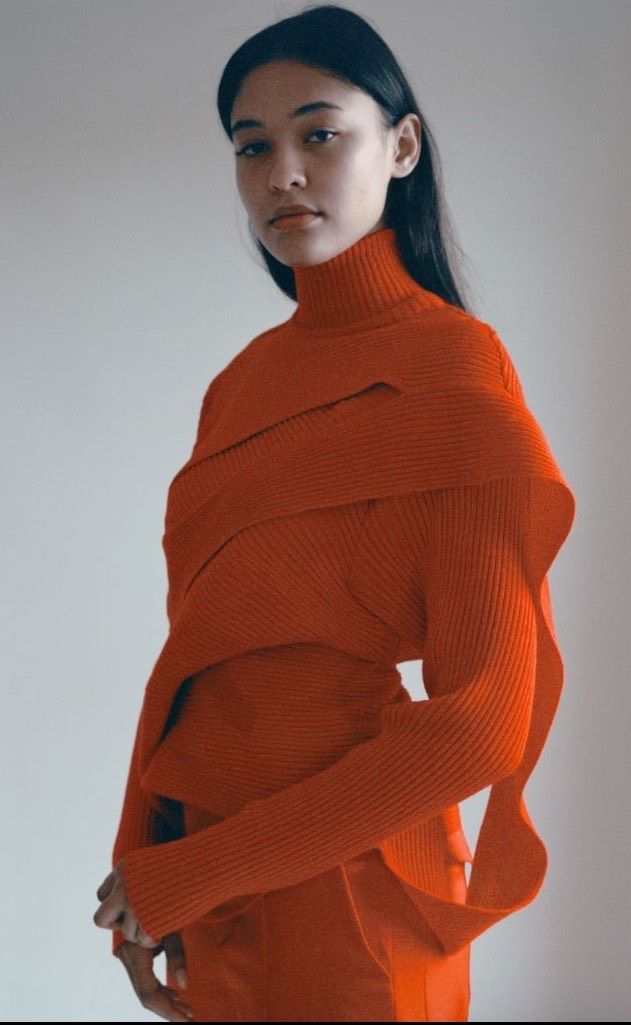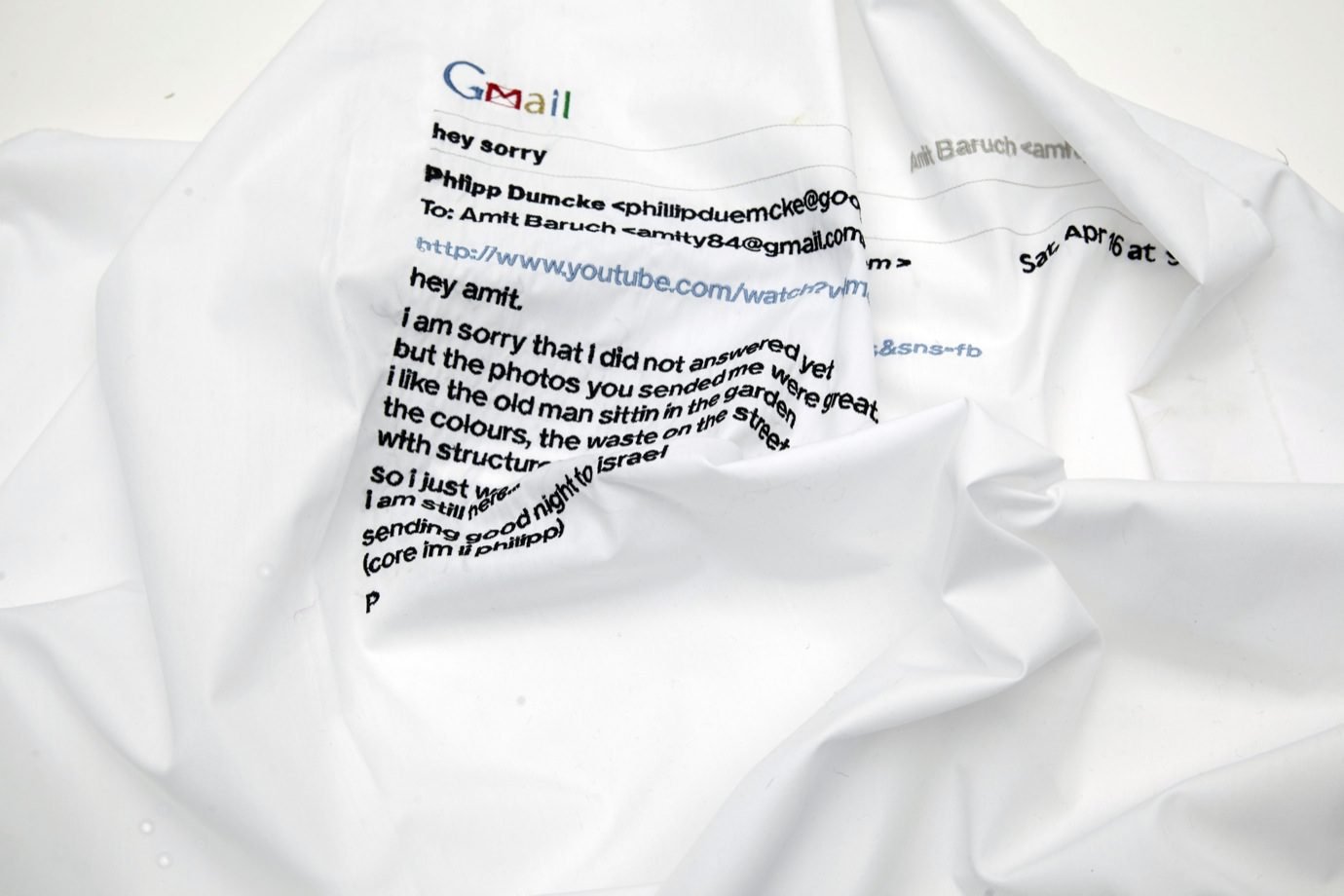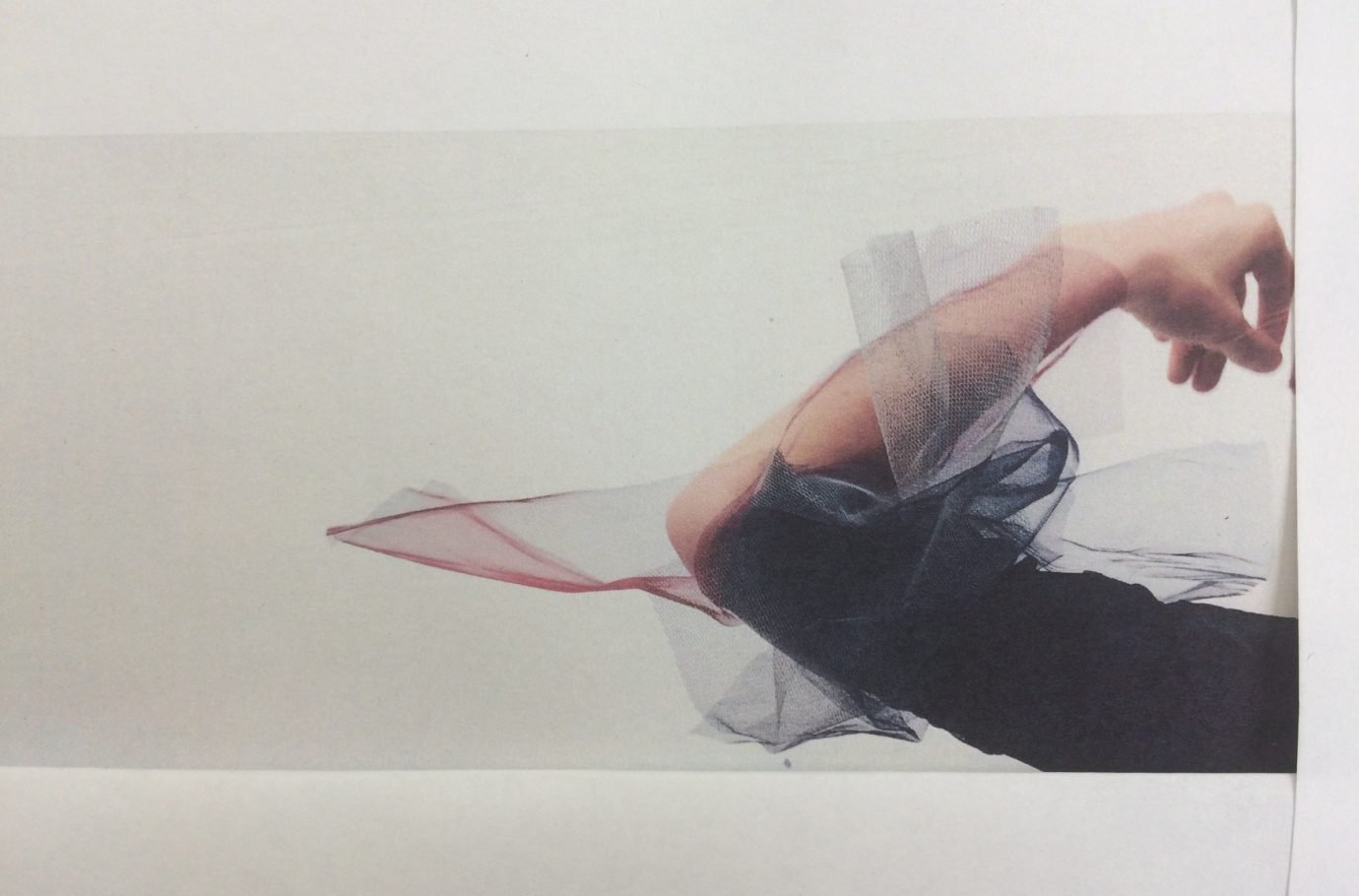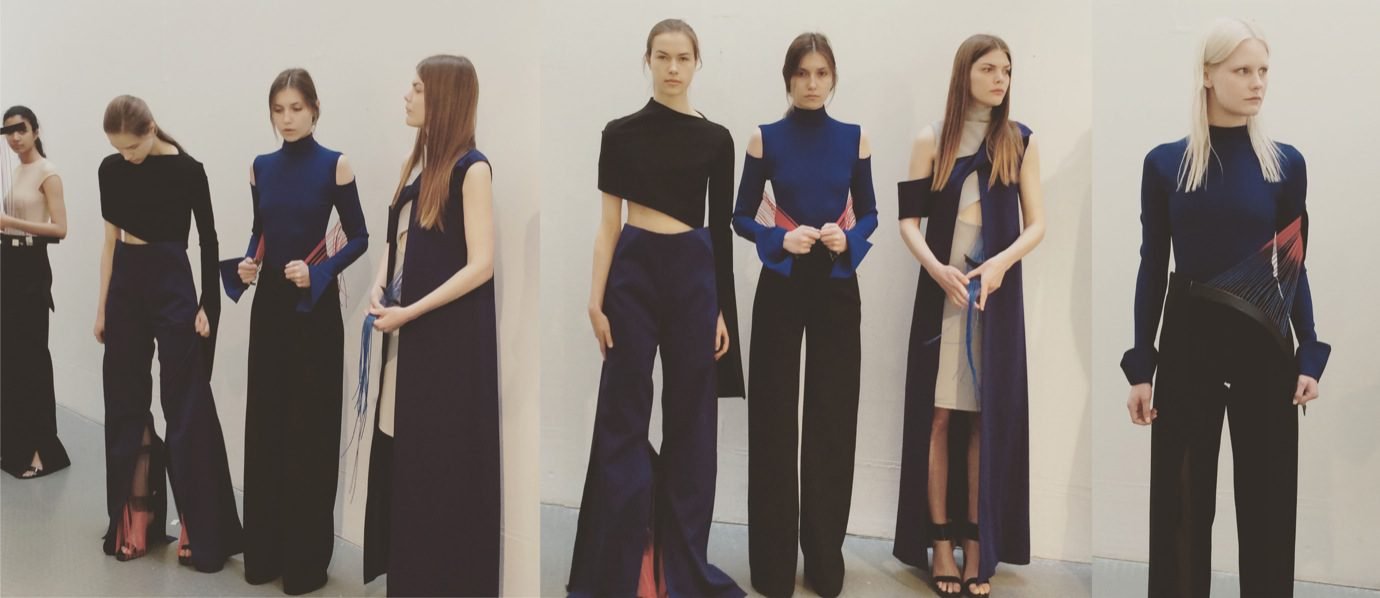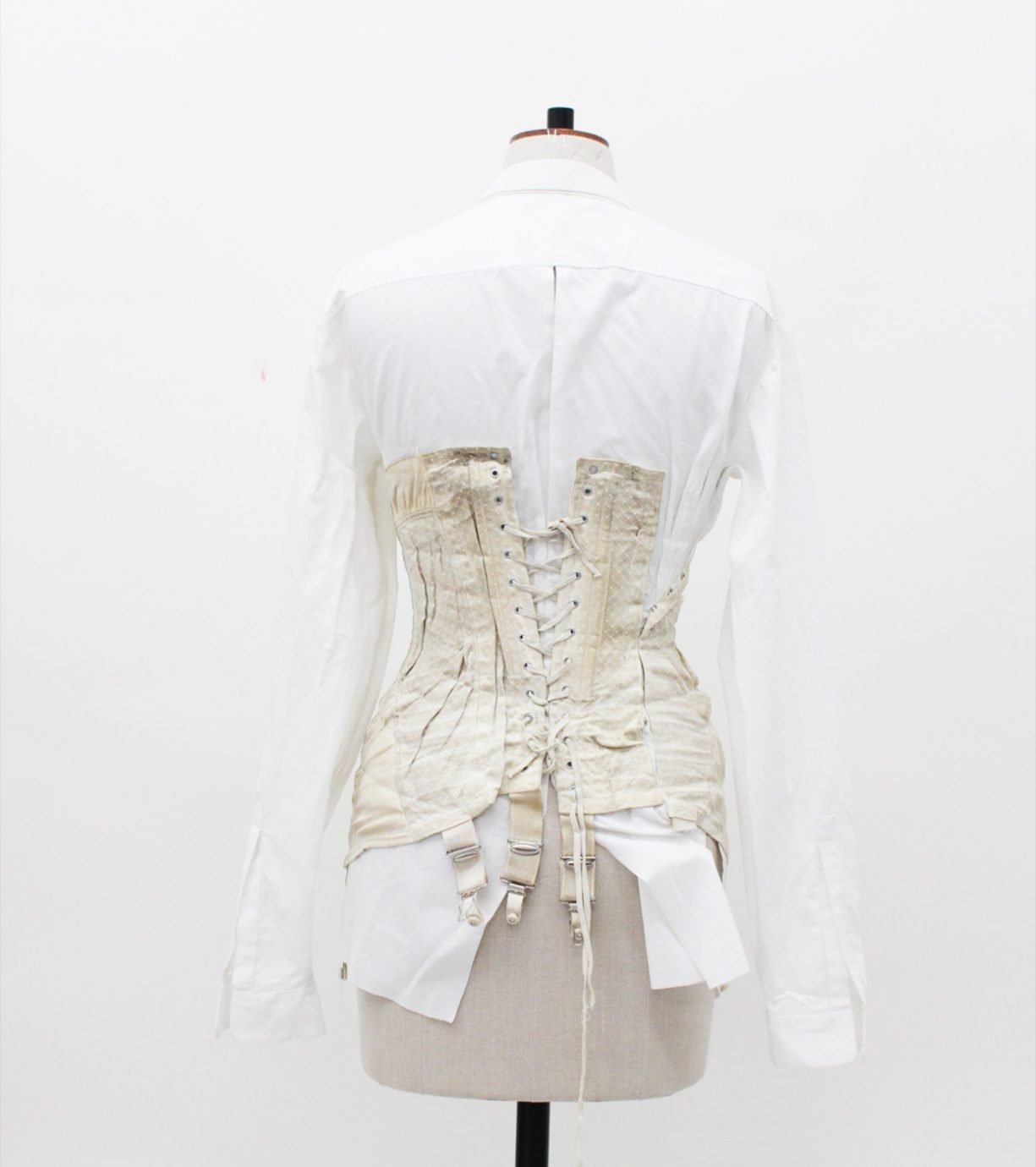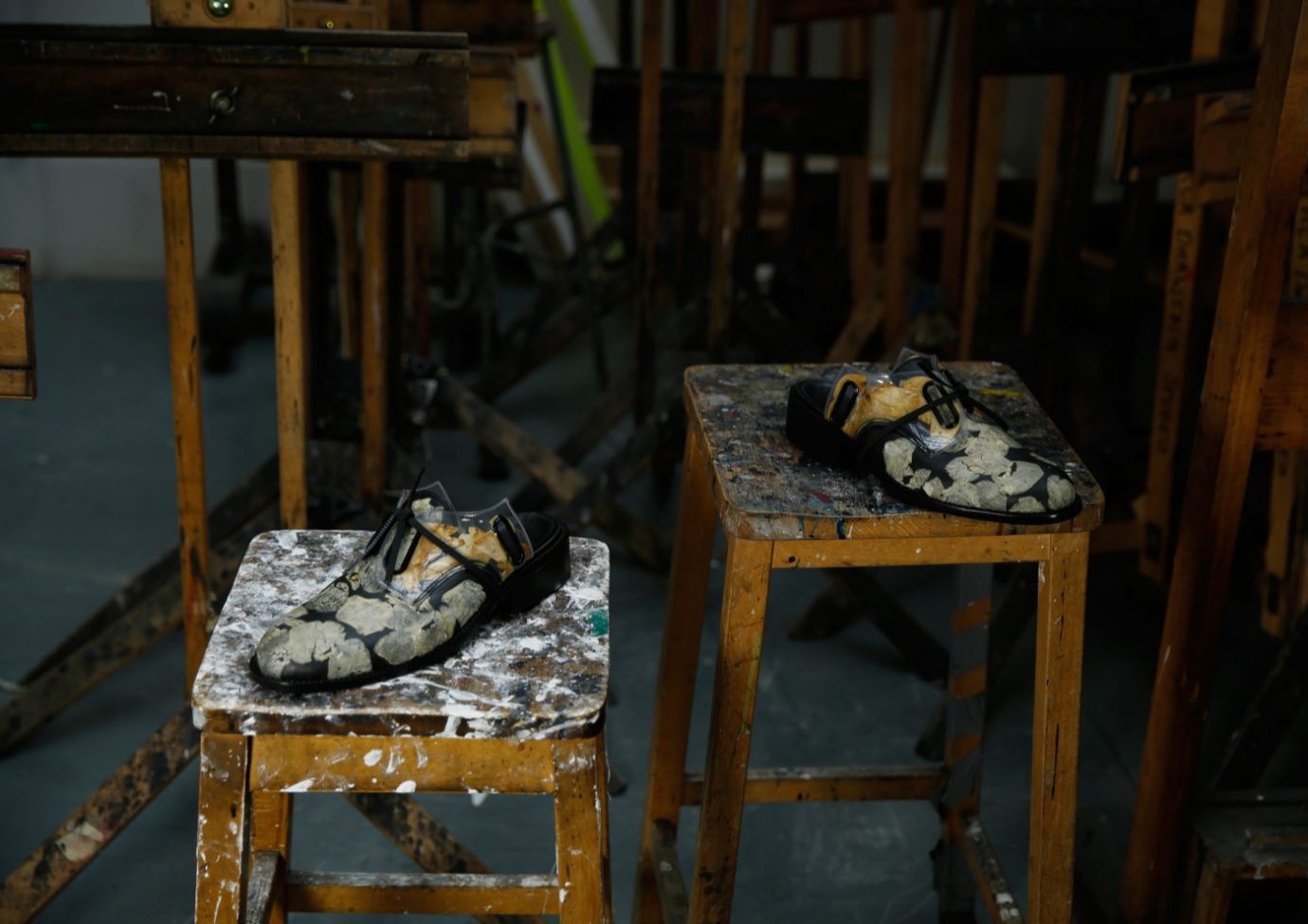Miss Havisham models lounge around a red and pink boudoir, reading the Satanic Bible and toying with the chokers around their taut necks. Powder and rouge stain their distant faces, offsetting the saccharine surroundings with a dollop of dark kitsch. Bloody corsets protrude from piles of mattresses like a sinister take on The Princess and The Pea and church organs ring over the unsettling scene.
For a split second, immersed in the demonic depths of Hungarian designer Fabian Kis-Juhasz’s imagination, you forget that you’re in the British Fashion Council’s Designer Showroom, with crowds and cars pulsing along The Strand above. And that’s exactly how Fabian wants it. “A catwalk show is on for ten seconds, and it’s harder to appreciate the details,” she says. “With a presentation, you can communicate much more of your identity. I wanted to make a visual statement of the things I like.”
“Femininity is such an unattainable image. It’s not realistic for most people who identify with it. It’s aspirational, but it also makes you feel shit about yourself.”
This is Fabian’s first presentation at London Fashion Week. Like Josephine Jones, whose on-schedule debut the night before featured an all-trans cast, Fabian used mostly trans and non-binary models. Many were close friends and collaborators, people who have appeared in all of her collections to date. In Fabian’s work, femininity is a guise that can be put on and taken off. Her moulded corsets, complete with phallic waistlines and drooping breasts, offer a more inclusive womanhood, where the body beneath it has no bearing on its validity: “Femininity is such an unattainable image. It’s not realistic for most people who identify with it. It’s aspirational, but it also makes you feel shit about yourself. So I love this idea of femininity being performative. The idea that femininity is not definitive of who you are, but just a thing that you can be, might help you feel more comfortable in your own skin.” It’s a tool for expression, of what you can be, as opposed to an intrinsic expression of who you are.




















